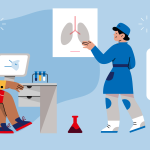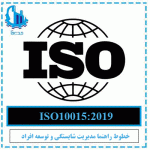Contact our experts at Modirfa to get free advice on planning and production management.
02188764867 – 02188761795
Setting up a project management office
This office is responsible for planning and managing project resources and system as well as the organization. In general, the standardization and overall framework of the organization and projects is done by the project management office. The top manager of the project management office is the CEO, and the project manager and financial manager can be mentioned among the colleagues and peers of this office. The main strategy of the organization regarding the projects is determined with the cooperation of the project management office and then implemented in the organization and the project.
Setting up a PMO project management office in your organization is exactly like setting up other offices in the organization’s sub-category, such as finance, human capital, etc.
The position of the project management office in the organizational chart
The purpose of setting up the project management office
The main goal of designing and implementing the project management office in the organization is to follow the correct and effective implementation of project management models and standards such as PMBOK and PRINCE, ISO21500, etc. in all the projects of the organization. The function of the project management office is both in the project department of the organization and in other processes of the organization. In general, the project management office is one of the departments of the organization that is also active in the field of projects, and this interaction greatly contributes to its agility and effectiveness.
The list of services that can be provided is as follows:
1_ Definition and management of project charter, scope and stakeholdersDefining the project vision document, introducing a sponsor and other project roles, forming project work teams, initial project meetings, managing project stakeholders.
2- Designing, documenting, monitoring, improving organizational and project systems and processesFormulating the sequence and interaction between projects and organizational processes and following up on the implementation of project and process management standards
3_ Planning and controlling project timePreparing the Master Plan before starting the project and turning it into a Detailed Plan after the details of the project are determined.
4_ Project cost planning and controlInitial estimation of the cost of each part of the project to decide and choose the contractor. Then, after determining the implementation details according to the specifications of the project, the planning of the cost paid to the contractor, the cost of personnel, procurement of materials and ancillary costs is carried out and periodically controlled.
5_ D5D modelingIf there are 3D maps, 4D and 5D modeling (time and cost) is done to graphically display the project implementation process as best as possible. Also, the control of the implementation process of the project is done in this way.
6_ Contract management of contractorsThe legal team is assisted in the preparation and adjustment of the contract from a managerial point of view. In both contract models, whether the company is the contractor or the employer.
7_ Preparation and review of the delay billPreparation and adjustment of bills of delays for the employer and review of bills of delays of contractors
8_ Preparation and review of the loss and damage billPreparation and adjustment of loss and damage bills for the employer and review of the contractor’s delay bill
9_ Claim managementChanges in any project are inevitable; Therefore, the project with large dimensions will definitely undergo changes that each party to the contract will try to gain more benefit and less loss from the changes. Therefore, there will be many claims in the contract and there will be disputes between the employer and the contractors as well as the contractors together, which needs proper management.
10_ Human resource managementWith regard to the active work fronts, it is necessary to optimize the number of human resources so that, firstly, the work front does not remain without manpower, and secondly, there is no additional force in the project, which causes an increase in cost and a decrease in productivity.
11_ Designing and tracking key performance indicators (KPI)Various KPIs of the program and performance of portfolios, along with providing graphic and web dashboards to inform managers of the project status.
12_ Management of DCC project documents 13_ Management of project knowledge and lessons learned 14_ Project risk managementProject risk management includes the processes of guiding risk management planning, identification, analysis, response planning, and project monitoring and control. The goals of project risk management are to increase the probability and effect of positive events and reduce the probability and effect of negative events in the project.
It is obvious that the project management offices are at different levels in terms of maturity and each level of them offers specific functional capabilities and in the proposal of Noor Consulting Engineers Group at any time based on the maturity of the organization as well as the needs of the employer, the performance of the project management office in an agile manner It matches the need.
Search
Categories
- automobile industry
- change management
- Communication with the customer
- coronavirus
- data science
- Foodstuffs
- Industry 4
- Key indicators
- Laboratory
- Medical equipment industry
- News
- Organization excellence and design
- Process management
- Product certification
- Project Management
- Quality management
- Radio Modirfa
- risk management
- Safety and health
- Standard text and translation
- Strategy
- The field of strategy and excellence
- Uncategorized
The Latest Posts

SIs published interpretations of the IATF16949 standard

Health care management: Providing quality to the health industry

Translation of ISO10015:2019 standard text
Subscribe to the newsletter
Get all latest content delivered to your email a few times a month.

